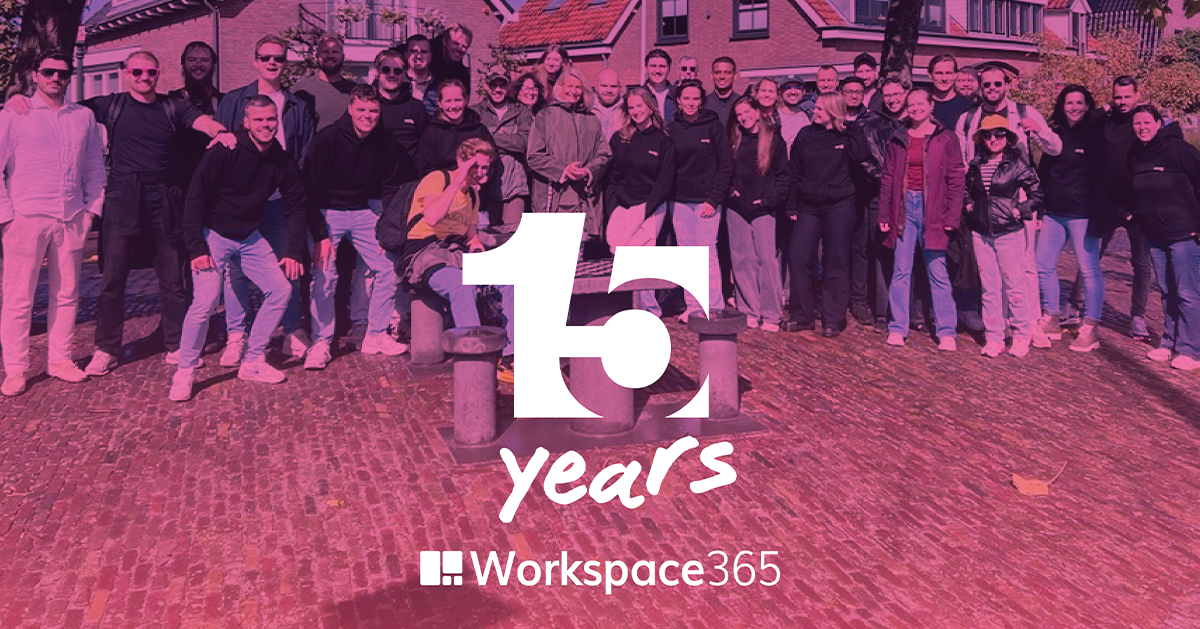One secure place where your users can access all the information, documents and applications relevant to them. Available at all times, from any location and from any device.
Hopefully we don’t have to convince you of the convenience of a personalised digital workspace. But please note: one digital workspace is not like another. How exactly you design the digital workspace has a very direct impact on its user-friendliness. Moreover, the functions and features of the digital workspace have a direct impact on the degree to which you actually achieve your IT and organisational goals.
In this blog post, we will therefore list all the important must-haves. What are the most important building blocks for the optimal digital workspace?
#1 Single Sign-On: log in once
Having to log into different systems several times a day: for many employees it is thorn in their side. Single Sign-On (SSO) ensures that your users only need to log in once, on a central server. From there, they can access all the applications and documents relevant to them via their digital workstation. This way, they quickly find what they need and do not waste time with the same login procedures over and over again.
It is estimated that SSO saves up to 24 hours per employee per year, as no time is wasted on entering log-in data or searching for passwords. At the end of the day, SSO improves the digital employee experience and generates considerable efficiency gains.
But SSO also offers a solution for the IT department. Because there are fewer login procedures, user management becomes much easier and clearer, with simple onboarding and offboarding. Adding a new application to the digital workspace is also quick and easy.
#2 Multi-Factor Authentication (MFA): maximum security
Viruses and other malware, ransomware, email fraud: Cybercriminals are becoming increasingly inventive and sophisticated. The optimal digital workspace is therefore primarily a well-protected workspace.
A good way to reduce cyber risks is multi-factor authentication (MFA). This means that your users can only access their digital workspace if they have additionally identified themselves via a mobile device. For example, via an SMS code on their phone or via a special MFA app on their phone or tablet (such as Microsoft Authenticator).
In practice, MFA is a very effective method of keeping uninvited guests out. The combination of user name and password alone is no longer enough for a hacker to penetrate a system unauthorised. It is smart to create an extra barrier using MFA, especially if you use Single Sign-On. If desired, you can also choose to have extra security for specific apps and systems containing sensitive information by using MFA.
#3 Location and device independent: accessible anytime, anywhere
An optimal digital workspace automatically adapts to the circumstances, and is therefore easily accessible from almost any location and from any device. Whether you work from a desktop, laptop, tablet or smartphone: via the browser, the optimal digital workspace is always available from everywhere.
Useful for people who are often on the move or mobile, such as care and sales staff, for people who work alternate between working at home and in the office, which is now increasingly common, or simply for anyone who wants more flexibility.
#4 Conditional Access: essential access control
Not every user needs every application on every device. The advantage of a well-designed digital workspace is precisely that the user only sees what he or she needs. This is controlled by Conditional Access, which means that users have access to certain systems, applications and documents depending on their role.
In the first place, this is important for your security. Conditional Access prevents people from opening information and applications within certain devices, browsers or networks. You can then, for example, make it impossible to reach the company network via a private device. To open an application that only works in Chrome in Internet Explorer. Or to open certain sensitive files without the appropriate rights.
But Conditional Access also ensures a maximally personalised user experience. Depending on their role and the corresponding rights, users are given access to specific local, hosted and web applications. This way, people only see what is relevant to them. And as an organisation, you automatically keep tighter control over who accesses the workspace and applications, where and in what way.
#5 A good search function
Via the well-secured, personalised digital workspace, the user only has access to the systems and applications that are relevant to him or her. Handy! But: as the organisation grows and the IT landscape becomes larger and more complex, this can mean that the user still loses the overview. A new role within the organisation can also lead to the digital workspace changing accordingly. As a user, you just have to find your way around that quickly.
The solution: a good search function, which displays only relevant results and ensures that users can quickly and easily find the information they are looking for within the digital workspace. The result: less frustration, less time wasted, and quick access to all relevant information.
#6 Integrated intranet
The latest news from your sector. The purchasing procedure within your company. The pictures of the last staff outing. As a means of internal communication, the social intranet is unrivalled. It provides information, connects colleagues and departments and improves mutual cooperation.
Seen in this light, an intranet offers many advantages. It is very convenient if employees can access the intranet from the digital workspace, so that they can find all functional and social information in one place.
A good digital workspace therefore offers the possibility of integrating to integrate the intranet. This creates a handy all-round platform, where company announcements are right next to company policies and applications. And where communication and collaboration go hand in hand with projects, tasks and documents.
#7 Integrated system for document management
What is the status of that particular quotation? What new purchasing agreements have we made with that particular supplier? Where is the working drawing for that one project again?
From e-mails to reports, from invoices to working drawings: in today’s information age, organisations produce huge amounts of documents every day. A good system for document management helps you to get your digital information provision in order and to ensure that your employees can quickly find the right document in one central location.
But: as with the intranet, it is useful if the document management system (DMS) to be integrated into your digital workspace. So that documents are easily available on any device and can then be used immediately.
#8 Self-service
We do our own banking online, book a hotel or flat from our smartphones and do our payments in the supermarket at the self-service checkout. Doing it yourself is increasingly the order of the day. The advantage: you are no longer dependent on the availability of others and you arrange your own affairs when it suits you.
Increasingly, this is exactly how it works in a business context. More and more organisations are opting for self-service, whereby users can initiate common processes such as requesting leave, submitting expense claims or making a request to the helpdesk themselves. Useful for the employee: they can deal with their affairs when it suits them. But also, for the relevant manager, HR employee or IT person, who only needs to grant approval remotely, thus freeing up time for non-standard requests.
It is even more convenient if this self-service is integrated into the digital workspace and also works for the digital workspace itself; for example, when requesting applications. In this way, the user has everything at hand, from any location and any device.
#9 Technology-independent platform
A good digital workspace ensures that users have access to all relevant applications, tasks, processes and platforms from one central location, as the starting point for the working day. It is important, however, that the digital workspace can work with all possible systems, regardless of the underlying technology. A good digital workspace therefore unites all systems and platforms: from web application to legacy-system. So that the user does not need another system after all.
Towards the digital workspace
In short, the optimal digital workspace combines a flawless digital employee experience with strict security and maximum efficiency gains. Would you like to find out more about the possibilities? Try the free Workspace 365 demo and experience for yourself what the optimal digital workspace looks like in practice.







